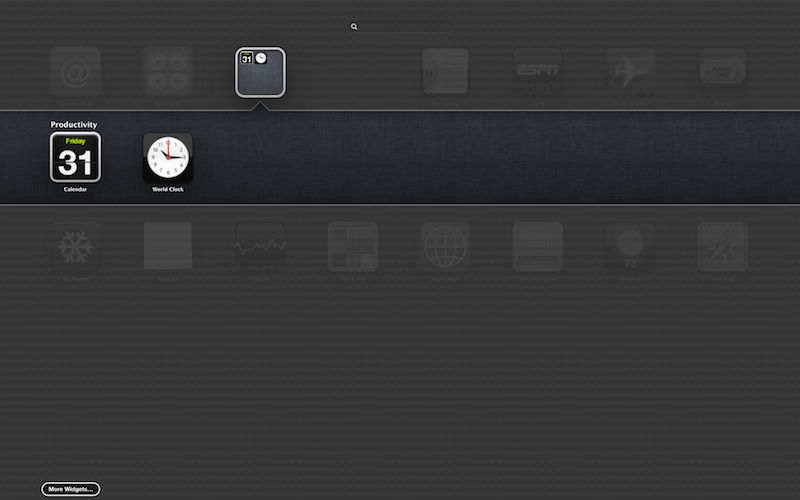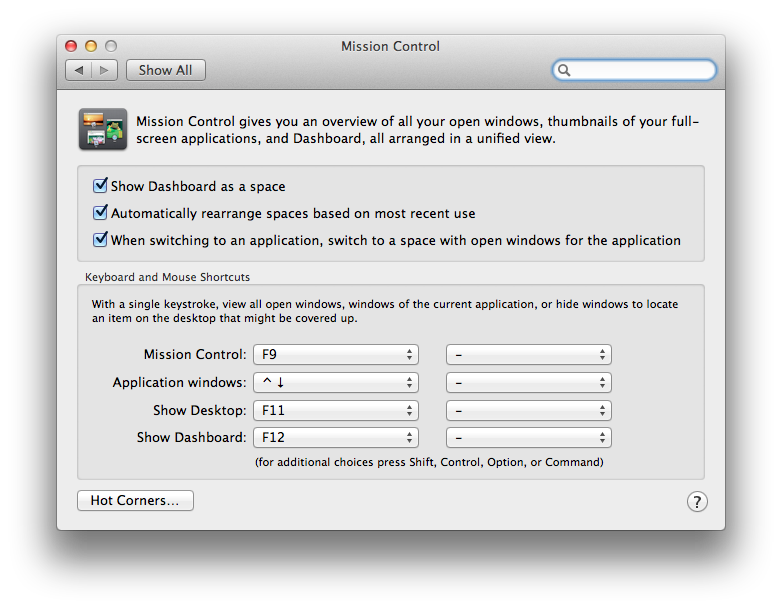

On sufficiently powered Macs, widgets will produce a ripple effect when they are opened, like a leaf falling onto water. For instance, a 3-D flip effect is used to simulate the widget flipping around, by clicking on a small i icon in the right bottom corner, the user can change the preferences on the reverse side other effects include crossfading and scaling from icon to body (when opening widgets), a "spin-cycle effect" when a widget is focused and the user presses Command-R or a suck-in effect when they are closed. It is also possible for Mac users to create their own widgets using built-in software.ĭashboard uses a variety of graphical effects for displaying, opening, and using widgets.

Some widgets can also serve as games, using Adobe Flash (or another multimedia authoring program) to create games just as if they were in a web browser. Other widgets, like Wikipedia, grab the contents of web pages and display them within Dashboard. One example is the Google Search widget, which simply opens up the user's web browser and performs a Google search. Widget functions and capabilities ĭashboard widgets, like web pages, are capable of many different things, including of performing tasks that would be complicated for the user to access manually. As of macOS 10.15 Catalina, Dashboard has been removed from macOS. Starting with Mac OS X 10.7 Lion, the Dashboard can be configured as a space, accessed by swiping four fingers to the right from the Desktops either side of it.įrom OS X 10.10 Yosemite onward, the Dashboard was disabled by default, with the Notification Center becoming the primary method of displaying widgets. Alternatively, the user can choose to make Dashboard open on moving the cursor into a preassigned hot corner or keyboard shortcut. It can also be accessed by a dashboard key. It can be activated as an application, from the Dock, Launchpad, or Spotlight. After loading, the widget is ready for use.ĭashboard was first introduced in Mac OS X 10.4 Tiger.

New widgets can be opened, via an icon bar on the bottom of the layer, loading a list of available apps similar to the iOS homescreen or the macOS Launchpad. Like application windows, they can be moved around, rearranged, deleted, and recreated (so that more than one of the same Widget is open at the same time, possibly with different settings). Dashboard applications supplied with macOS included a stock ticker, weather report, calculator, and notepad while users could create or download their own.īefore Mac OS X 10.7 Lion, when Dashboard is activated, the user's desktop is dimmed and widgets appear in the foreground. These are intended to be simple applications that do not take time to launch. Dashboard is a discontinued feature of Apple Inc.'s macOS operating systems, used as a secondary desktop for hosting mini-applications known as widgets.


 0 kommentar(er)
0 kommentar(er)
